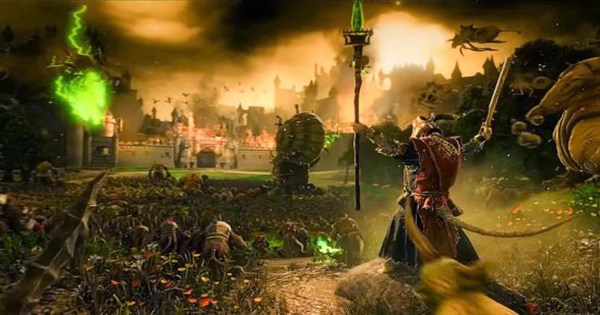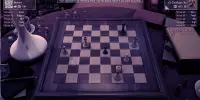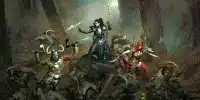Immortal Empires is without a doubt the most ambitious game to date in the Total War series. Total War: Warhammer 3’s free extension for the fantasy trilogy joins together every group, Lord, and region from the first three Warhammer games onto a single globe map. It’s a sizable, integrated sandbox that expands the scope of the grand-strategy franchise and serves as a model for what’s to come.
The concept of having a gaming environment that we can expand on over time is one the developer would rely on for future games, says director Ian Roxburgh, who also notes that while future games “may not exist in the exact same format […]
Immortal Empires was always the end goal, but splitting it across several games allowed Creative Assembly to build toward it gradually
Immortal Empires has been in development for almost ten years; although its seeds were planted with the first game in the Total War: Warhammer trilogy, they didn’t begin to sprout until after the release of its sequels, which each introduced new armies, changed gameplay, and added larger campaign maps before being integrated into the entire Warhammer Fantasy universe. Although Immortal Empires was always the ultimate aim, the developer Creative Assembly was able to steadily advance toward it, one skink and squig at a time, by spreading it across numerous versions.
Because we had a baseline, Roxburgh explains, “the gameplay was being fine-tuned as well as brand-new elements being added in each subsequent game.” “I think it’s a premise that has worked extremely well, and what we will continue to do, even if it takes on a little bit of a new shape and form,” the speaker said.
Ripping yarns: Not that Total War hasn’t already undergone significant modification. Although Roxburgh claims that the series’ open-ended gameplay is “sacrosanct and always will be,” Creative Assembly has made a huge point of experimenting with linear campaigns in recent Total War games. The series has always been noted for its open-ended gameplay. Warhammer 3 placed a greater emphasis on storytelling by creating an epic tale that timed and punctuated your worldwide conquest, as opposed to Warhammer 2’s Eye of the Vortex campaign, which was a staged scenario played out on a large map.
“We’ve made progress toward that during the Warhammer trilogy, but I believe one of the reasons we were quite so thrilled to get that far with Warhammer 3 is because we knew Immortal Empires would be the sandbox of all sandboxes was just around the corner,” adds Roxburgh. If that weren’t the case, “maybe we wouldn’t have gone quite so far.”
Roxburgh anticipates that upcoming Total War games would place a greater emphasis on emergent storytelling in order to “bring out the tale in turn-by-turn gameplay.” Players can find storylines that are exclusive to their game version by tracking the rise and fall of characters and factions across the constantly changing campaign map. Although linear campaigns may appear, don’t count on them to take the place of the series’ well-known spontaneous storytelling.
“What we want to keep doing, in addition to providing a top-level overarching narrative, is help to bring that natural narrative out, and tell it back to players,” says Roxburgh. “That way, they can do all that story-developing naturally in a sandbox environment and they no longer almost have to take notes on what’s happening.”
War never changes: The Warhammer trilogy not only dabbled in many storytelling modalities but also significantly altered player factions. Its fantastical armies play quite differently in both the turn-based campaigns and RTS battles, in addition to looking highly distinct from one another. Hit-and-run strategies work wonders against Khorne’s plodding, armored troops but are ideal against Slaanesh’s quick and squishy spawn. Similarly, the static army Kislev can choose from is a far cry from the cyclical recruitment opportunities of Nurgle. All of this results in a level of strategic imbalance that previous historical Total War games have found difficult to duplicate.
“It’s tougher in a historical setting to achieve that because there isn’t as much visible diversity between them all, even though different nations throughout history did have different configurations with their armies,” says Roxburgh. Yet the idea of giving each of [Warhammer’s] races a distinctive twist has been adopted by the entire Total War team and is a significant component of what we do when developing Total War games.
There is no guarantee as to when those new games will be released. There is already more Immortal Empires material planned, such as new races and a wider range of endgame situations. In the sprint to the finish line, Roxburgh estimates the crew is approaching the “80- to 90-meter threshold,” and DLC director Richard Aldridge suggests the home stretch may hold a few surprises.
According to him, there are still a ton of unturned stones and uncharted territory to discover. “We’ve done more than I anticipated we’d do when I started this, so I daresay that additional chances may present themselves in the future as things that weren’t conceivable become possible.”















